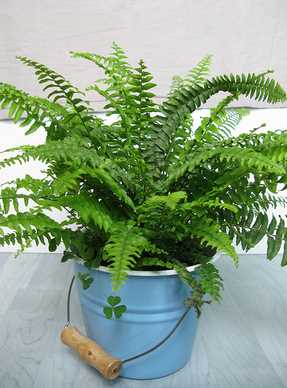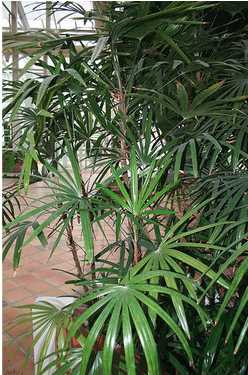10 Best Air Filtering House Plants, According to NASA (With Pictures)
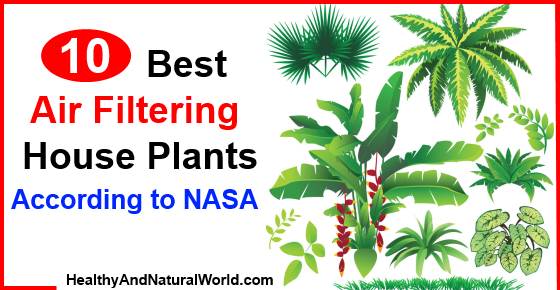
Using space station technology to ensure the safety of your home may be easier than you thought. The National Aeronautics and Space Administration conducted the NASA Clean Air Study to demonstrate the effectiveness of particular plants to purify air.
As our homes become more insulated and efficient, they also make it easier to trap indoor air pollutants. Chemicals like benzene, formaldehyde, and ammonia can come from household items and pollute your home’s atmosphere without any visual warning.
Neglecting the quality of the air you breathe on a daily basis could result in serious consequences. Illness, allergies, asthma and frequent headaches are just a few of many inconveniences that come from airborne particles floating around your home. Air pollution is also one of the reasons the can affect your digestive system.
There’s no need to dish out hundreds of dollars on expensive appliances when you’ve got Mother Nature. According to NASA there are plenty of plants that soak up harmful particles in the air and release fresh oxygen – all while adding a decorative touch.
Where does it all come from?
One of the scariest things about indoor air pollution is the seemingly harmless nature of its many sources. Listed below are some of the most common ways a home can become polluted.
• Glues and Adhesives
• Carpets (especially new carpets)
• Chemicals in household cleaners (instead of using poisonous household cleaners you can make your own natural household cleaners)
• Foam insulation materials
• Paint
• Pressed-wood products (plywood, particle board, and medium-density fiberboard)
If plants are good enough for the pioneers of space travel than they must be doing something right. They also might spark a new found hobby of gardening as well!. The plants listed below are 10 of the most effective air filters Mother Nature has to offer.
The Best Air Filtering House Plants (Including Images and Common Names)
1. English Ivy (Hedera Helix)

The English Ivy is an ideal air filtering plant for hanging baskets or pots because its invasive nature allows it to spread easily. Research found it to be particularly useful in eliminating airborne fecal-matter particles. This type of ivy plant is also great for a family with smokers in it. Its ability to soak up carcinogens from second-hand smoke helps to purify the air of small areas. It’s also versatile when it comes to the growing conditions and it doesn’t require much maintenance.
English ivy is also one of the best plants for hanging baskets.
2. Golden Pothos (Epipremnum Aureum)
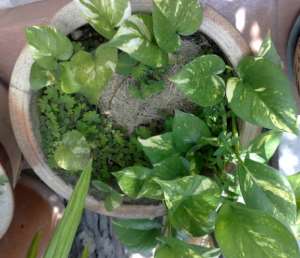
NASA considered the golden pothos plant (Epipremnum Aureum) as one of the most effective choices for eliminating formaldehyde. People that have struggled to keep plants alive can rejoice – this vining pothos plant type is incredibly hard to kill. This indoor vine plant doubles as an effective eliminator of carbon monoxide as well. Its vines grow fairly quickly and look great suspended from elevated areas – it’s one of the best indoor hanging plants.
3. Boston Fern (Nephrolepis Exalta Bostoniensis)
This type of fern plant functions really well as a natural air humidifier. While it’s busy adding humidity to the environment it also does a great job eliminating formaldehyde. Its large feathered leaves (called fronds) span as much as 5 feet and allow just a single plant to have a noticeable impact.
4. Dracaena (Dracaena Deremensis)
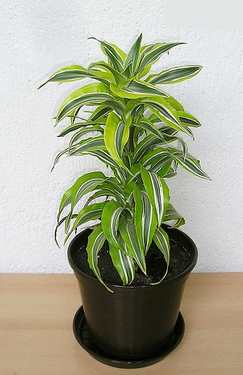
The long striped leaves of this plant can easily thrive indoors with only small amounts of sunlight and moderate watering. It’s an excellent houseplant to eliminate trichloroethylene that comes from solvents and varnishes. A single plant can grow over ten feet tall, but pruning will keep it short if you prefer.
5. Bamboo Palm (Chamaedorea seifrizii)
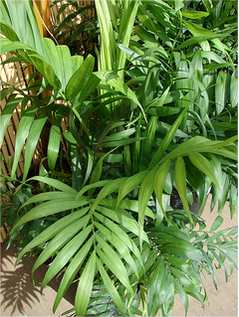
The Bamboo Palm can easily fit into smaller areas with indirect lighting. NASA found it to be one of the best air filtering plant for benzene and trichloroethylene, and a great humidifier. This indoor palm plant is a bit smaller than other types of indoor palm trees and easy to grow in shady areas. It releases a good deal of moisture into the air and is considerably resistant to insect infestation.
6. Dragon Tree (Dracaena Marginata)
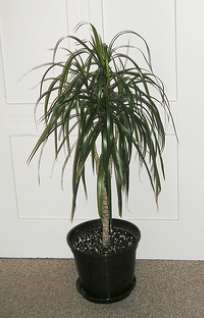
The dragon tree (Dracaena marginata) is a widely popular plant for office spaces and homes for its attractive look and effective air purifying power. It’s also a one of the best plants to keep in your bedroom because it’s a low light plant that is easy to care. This plant is great for filtering the air because it absorbs xylene – a chemical released from car exhaust, paints, and cigarettes. It can also be potted together and trained to grow into a braid for visual appeal and added air purification.
7. Peace Lily (Spathiphyllum)

The Peace Lily is one of the most visually appealing plants on the list with its unique white flowers. It also boasts one of the highest transpiration rates on the list of plants that clean the air. Use it to remove trichloroethylene, benzene, acetone, and alcohols from the air. Just be cautious of the plant’s high toxicity and keep it out of reach of children and pets.
You can also keep peace lilies in the bathroom as one of your shower plants because it grows and flowers in low-light conditions.
8. Lady Palm (Rhapis Excelsa)
The Lady Palm plant requires a lot of watering during the spring and summer but makes up for it with its heavy resistance to insects. The lush leaves of this type of palm tree grow thick and with rich color without much effort. It is said to be a versatile and effective air filtering houseplant for multiple indoor pollutants.
9. Spider Plant (Chlorophytum Comosum)
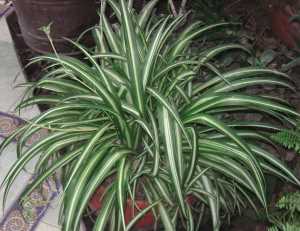
The Spider Plant requires natural light but shouldn’t be exposed directly to the sun. This plant thrives in moist environments with bi-weekly watering and grows at impressive speeds. Owners prefer to place these plants near the fireplace and kitchen where carbon monoxide may build. Spider plant is also one of the best shower plants to keep in your bathroom.
10. Snake Plant (Sansevieria Trifasciata or Viper’s Bowstring-hemp)

Snake plant is in the list of drought tolerant plants
The Snake Plant (viper’s bowstring-hemp) is unique in that it sucks in carbon dioxide and releases oxygen during the night. Many people keep the snake plant (also named Dracaena Trifasciata) in their bedroom or carpeted living room. It’s simple to take care of and it prevents the formaldehyde that leaks from your carpet and wood furniture from sticking around the air. It’s also one of the most unique and unusual houseplants because of its long leaves that look like swords growing straight out of the ground.
If you have pets than you should be aware that most indoor plants aren’t safe for pet consumption. If you plan on growing plants in or outside of your home you should be aware of their toxicity. You can consult with your vet and see how it may affect your dog, cat, or any other animal that may consume it.
Related: The Best Plants to Have in Your Bedroom
Related articles:
- The Best Shower Plants to Keep in Your Bathroom
- Indoor Plants That Don’t Need Sunlight
- Unique, Cool, and Unusual Houseplants You Need to Grow
- The Most Amazing Drought Tolerant Plants

